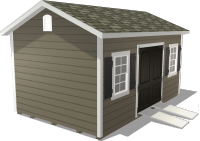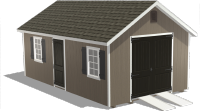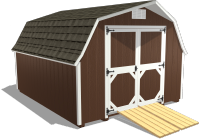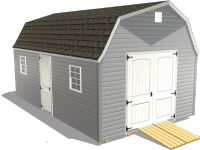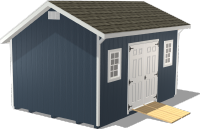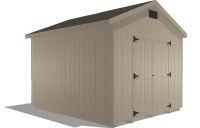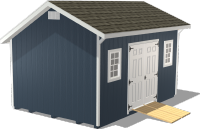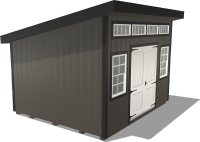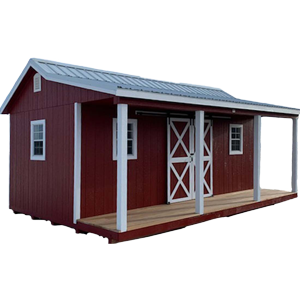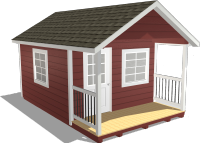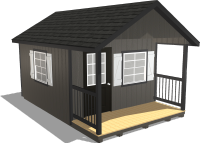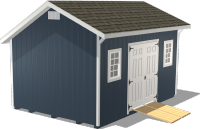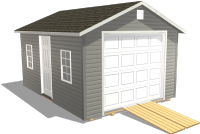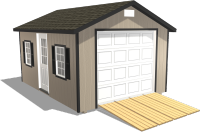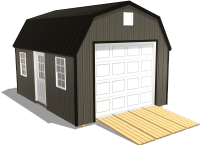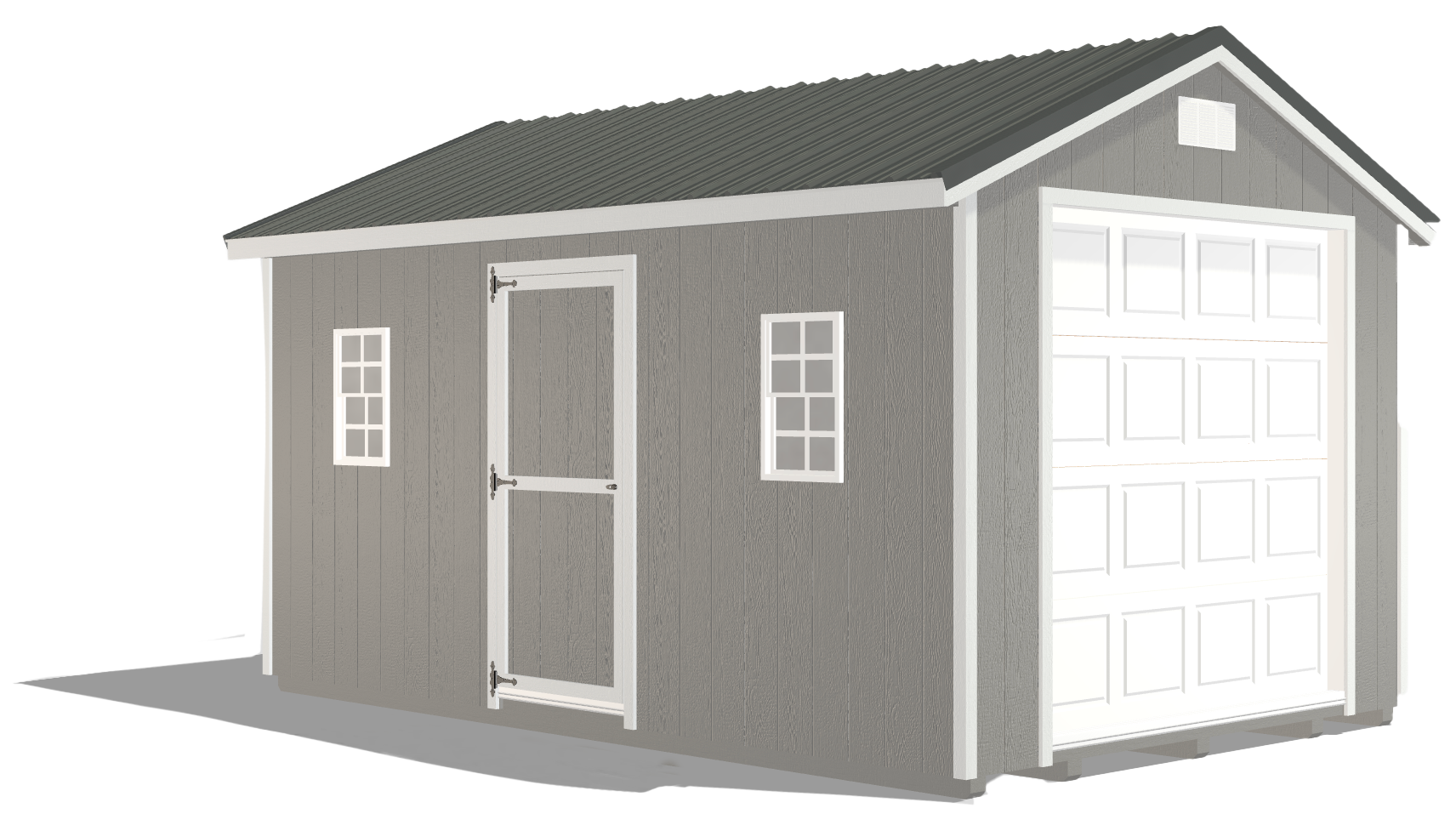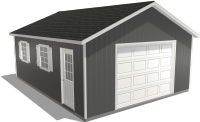Keep Greenhouse Humidity in Check: How to Manage Temperature and Moisture Levels
by Dakota Storage Buildings, on December 18, 2024

Maintaining optimal temperature and humidity levels while gardening with a greenhouse is critical to promote healthy plant growth. Without proper climate control, plants can become stressed, making them more susceptible to diseases and pests. The result can be stunted growth, reduced yields, and a greenhouse that is difficult to manage — especially in regions with unpredictable weather, like here in the Midwest. This blog will guide you through the steps to balance greenhouse humidity and temperature, ensuring your plants thrive year-round, no matter what the weather brings.
Balancing Temperature and Humidity for Healthier Plant Growth
Each plant species thrives in specific temperature and humidity ranges, and knowing these needs can help you maintain a stable environment in your greenhouse.

Vegetables: Veggies, like tomatoes and peppers, prefer temperatures between 70-80°F during the day and 60-70°F at night, with a humidity level of around 50-70%.
Herbs: Herbs, such as basil, thyme, and mint, thrive in moderate temperatures ranging from 65-75°F during the day and 55-65°F at night. They prefer humidity levels between 40-60%.
Tropical Plants: Tropical plants, such as orchids and ferns, flourish in warmer temperatures, ideally between 75-85°F during the day and 65-75°F at night. They need high humidity, often above 70%, to mimic their natural environment.
Seedlings: Seedlings generally prefer cooler temperatures of 65-75°F during the day and slightly lower at night, around 60-65°F. Greenhouse humidity levels between 70-90% help encourage proper germination and early growth.
Leafy Greens: Leafy greens like lettuce and spinach grow best in cooler temperatures, around 60-70°F during the day and 50-60°F at night, with a humidity range of 60-75%.

Understanding the specific climate needs of your plants is essential to avoid issues like mold, mildew, or heat stress. Keeping a quick reference guide or chart handy for common greenhouse plants can help you track temperature and humidity requirements more easily. For example, leafy greens such as lettuce prefer temperatures in the 60-70°F range with greenhouse humidity levels around 40-60%, whereas herbs like basil and cilantro thrive in warmer temperatures around 70-85°F. By monitoring and adjusting these factors, you can give your plants the best chance at healthy growth and optimal productivity.
Keeping Your Greenhouse Warm in Winter and Cool in Summer
Maintaining the right temperature in a greenhouse can be challenging, especially with the fluctuating Midwest weather. To ensure plants stay healthy, both heating and cooling systems may be necessary, depending on the season.
![]()
Heating Systems
During the cold Midwest winters, it is essential to keep your greenhouse warm enough to protect plants from frost and cold damage. Heating options like electric heaters, gas heaters, and radiant heating systems can be a simple solution.
Electric Heaters: Electric heaters are convenient and easy to install, though they can be more expensive to run.
Gas Heaters: Gas heaters are efficient and ideal for larger greenhouses, though they require proper ventilation to avoid safety hazards.
Radiant Heaters: Radiant heating systems, which warm objects rather than air, offer an energy-efficient solution by distributing heat more evenly.
The right heating solution depends on the size of your greenhouse, your budget, and your local climate. Consider choosing a system that can maintain consistent temperatures while keeping energy costs down. For smaller greenhouses, an electric heater may be more than sufficient, while larger greenhouses may benefit from a combination of gas heating and radiant systems to ensure even warmth.
![]()
Cooling Systems
In the summer months, keeping your greenhouse cool can be just as important as heating it during winter. High temperatures can cause plants to overheat, leading to reduced growth and potential crop loss. Cooling systems such as shade cloths, evaporative coolers, and fans can help regulate the internal temperature.
Shade Cloths: Shade cloths are a simple solution that blocks a percentage of sunlight to keep temperatures down.
Evaporative Coolers: Evaporative coolers are more effective in reducing heat and work by adding moisture to the air while cooling it.
Fans: Properly placing fans throughout the greenhouse can help circulate air and lower temperatures, especially when paired with vents or shade cloths.
Automated cooling systems are an excellent investment for precise climate control. By adjusting shading and airflow based on real-time temperature changes, these systems can help you maintain the perfect environment for your plants. If you need a larger greenhouse or plan to grow delicate plant varieties, automated systems will give you peace of mind and can reduce the need for constant manual adjustments.
Ensure Proper Ventilation to Maximize Airflow
When it comes to gardening with a greenhouse, ventilation is key to controlling both temperature and humidity levels. By improving airflow, you can keep moisture from building up, lower the temperature, and prevent problems like mold or mildew. Roof vents, side vents, and exhaust fans are effective ventilation options for your greenhouse. Roof vents allow warm, moist air to rise and escape, while side vents can bring in cooler air from the outside. Exhaust fans help pull out stagnant air, improving overall circulation.

For the best results, position vents and fans strategically to create a consistent airflow. You may need to adjust the placement of vents and fans depending on your greenhouse’s size and layout. Adjusting windows and vents daily can fine-tune airflow, keeping greenhouse humidity and temperature balanced. If possible, opt for automatic vents that open and close based on the internal temperature to provide more precise climate control.
Smart Tools for Managing Temperature and Humidity
Monitoring temperature and humidity levels is vital for maintaining a stable growing environment. Tools like thermometers and hygrometers are essential for tracking these variables. Digital climate controllers offer more advanced options, enabling you to automate temperature and humidity settings based on real-time data. These systems monitor your greenhouse’s internal conditions and adjust your heating, cooling, and ventilation systems as needed to maintain a consistent climate.
Smart sensors can enhance this process by providing detailed insights into your greenhouse’s environment and allowing you to make timely adjustments. These sensors can alert you to sudden temperature spikes or greenhouse humidity changes, helping you take immediate action to protect your plants. To ensure accurate readings, position your sensors or monitoring devices in the center of the greenhouse and near the plants, where temperature and humidity levels matter most.
Create the Ideal Greenhouse Environment
Maintaining the right balance of temperature and humidity in your greenhouse is essential for ensuring plant health, preventing disease, and optimizing growth. By understanding the climate needs of your plants and implementing appropriate heating, cooling, and ventilation systems, you can create a stable environment year-round. Regular monitoring ensures that you can fine-tune your setup and respond to fluctuations in real time. Whether you are growing tropical plants, vegetables, or herbs, these strategies will help you achieve healthier, more productive plants in any weather.
Ready to take your gardening with a greenhouse to the next level? Browse our stock greenhouses today!



